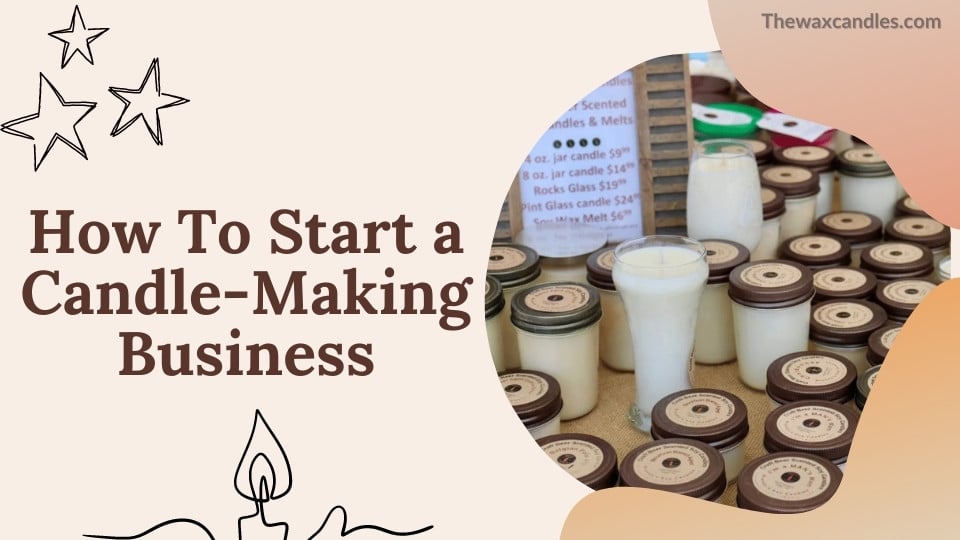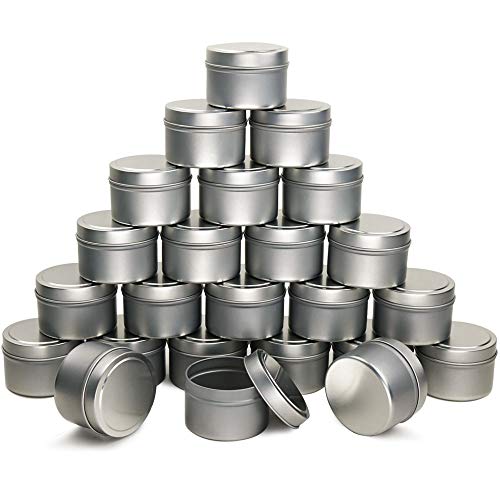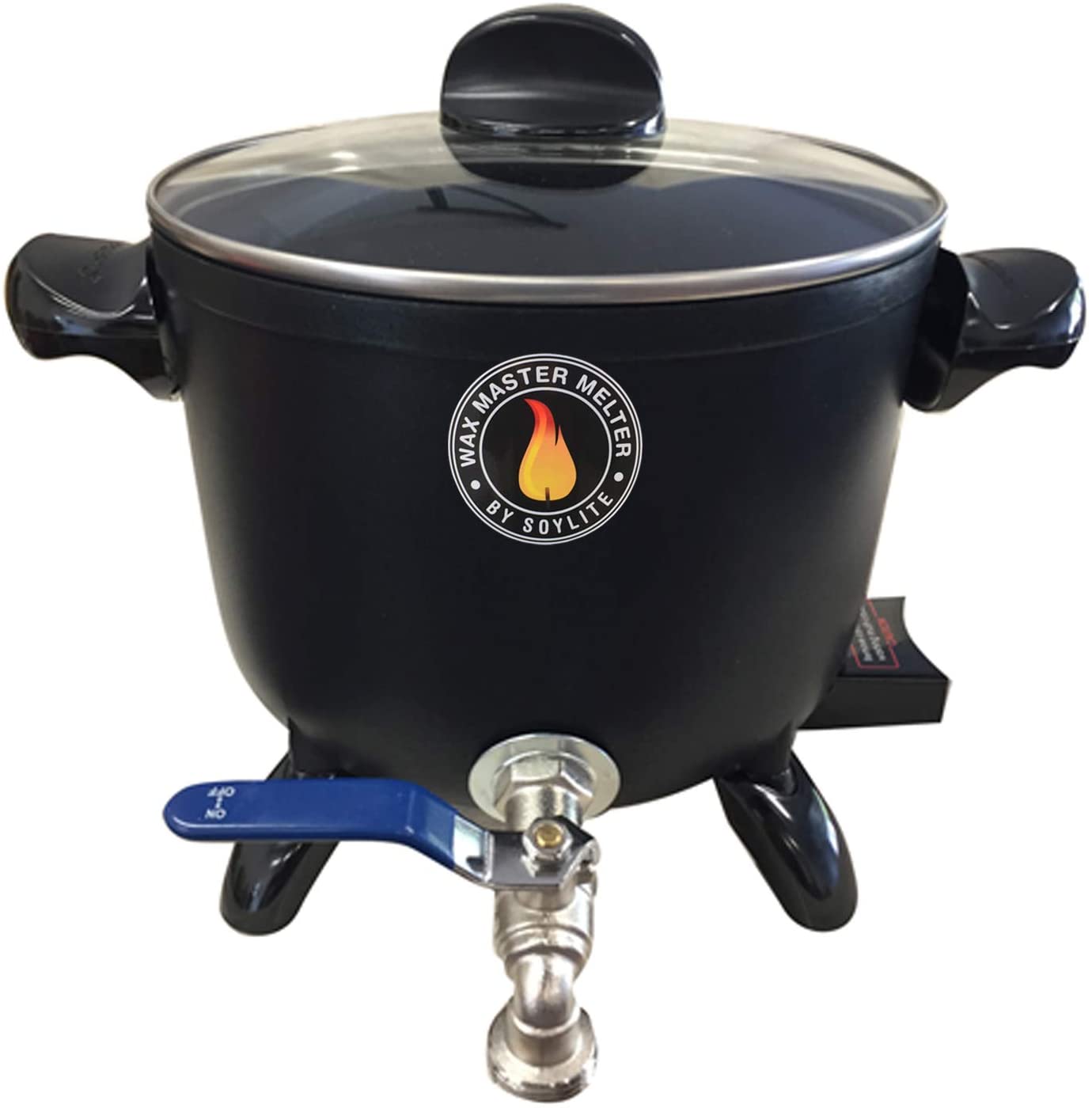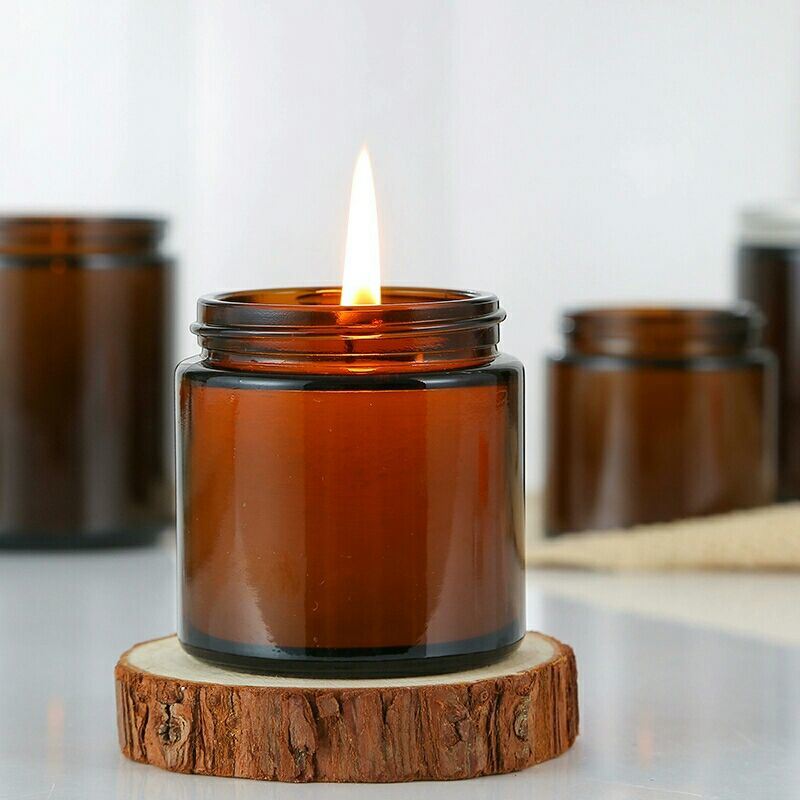
Do you want to start a candle-making business at home? If yes, here is a complete guide to starting a candle-making business with NO money and experience.
We will provide you with an in-depth sample candle-making business plan template. We also take it further by analyzing and writing a sample candle marketing plan backed by actionable guerrilla marketing ideas for business. This article will consider all the requirements for starting a candle-making business. So put on your entrepreneurial hat, and let’s get started.
Why start a candle making business at home?
People not only buy candles as gifts but also decorate and change the fragrance of their homes and places of business. Today, independent candle businesses can compete with established companies because consumers generally look at the quality and performance of a candle when making purchases rather than the name attached to the candle.
Suppose you are considering starting a candle business. In that case, you can do several things to grow your venture to success, such as learning how to make candles by taking an online or in-person class or reading books or tutorials about candles.
Books on candle making may be available at your local library, and there are many free print and video tutorials on the Internet. If you think you can research this type of business, you can start taking all the information you find around you seriously. Here is a complete guide on how you can start a candle making business.
A Complete Guide
Industry Overview
Candle manufacturing is a multi-billion dollar industry, so it’s fair to say it’s big. However, compared to other industries, such as petroleum, automobiles, or computers, candles are classified as a fairly weak sector. Whether an industry is large or small, there are several ways to measure its size.
Interesting statistics about the candle industry
Many companies involved in candle production are privately owned, making a true snapshot of the industry’s market capitalization impossible. Private corporations include two of the largest players, SC Johnson Sons and Yankee Candle. However, Procter Gamble Co, a publicly traded company and manufacturer of many household products, including candles, is worth more than $200 billion.
Candle sales took off in the 1990s, when they became part of home décor, and peaked in 2000, growing at a rate of 10 percent or more each year. Consumer demand for home fragrance products helped fuel this tremendous boom. Sales were flat during the 2000s due in part to the recession, but there are signs that sales are about to revive.
The luxury candle market is driving overall growth in the home fragrance market. While candles come in all sorts of shapes and sizes, the scent is the reason for the new growth. Social media is helping to drive the home fragrance candle market, creating a surge in online sales.
Candle sales in the U.S. are estimated at approximately $2.3 billion a year, but this does not include accessories such as candlesticks. By comparison, the U.S. computer industry has annual revenues of approximately $86 billion, which makes the candle industry seem small. Candles are a very discretionary purchase, and the economic climate heavily influences sales.
Approximately one-third of all candle sales take place during the holiday season. More than 400 candle manufacturing companies in the United States and dozens of craft producers manufacture candles for local or non-commercial use. The candle industry employs more than 7,000 manufacturing, distribution, and sales workers.
For comparison purposes, there are 43,000 clergy and 25,000 carpet installers in the United States. The retail price of a candle can range from 50 cents for a votive to $200 or more for a distinctive handcrafted candle. There are as many as 2,000 varieties of candles and 10,000 scents available.
More than 1 billion pounds of wax are used to make the candles sold in U.S. stores yearly. Paraffin wax is the most widely used candle wax today, along with beeswax, soy wax, palm wax, and blended wax.
Over the past five years, improving incomes and introducing variously scented and colored candles have helped the industry recover from the lows suffered during the recession. Going forward, the candle manufacturing industry is expected to continue to benefit from the growing demand for candles at home and abroad.
This, in turn, will be supported by increased disposable spending and a sustained preference for candles as scented and colored additives for rooms and homes. Still, the industry is expected to continue to grapple with challenges such as competitive substitutes (e.g., flowers), low-priced imported candles, and high plastic input costs.
Starting a candle making market research study
Demographics and psychographics
Those requiring the use of candles include households, churches, as well as interior decorators, among others.
List of niche ideas in the candle making industry
Once you have decided on the material to be used for candle production, you can continue to make gel candles, aromatherapy candles, or container candles. If you are so inclined, you may want to experiment with confectionery candles, a special genre of candles that replicate the look and smell of popular foods.
Through the molding process, there is no limit to how you want to mold your candles; alternatively, you can decorate your candles to add visual impact; you can use anything from flowers to paint. The type of candle you choose to make or manufacture would be its own specific niche.
- Making container-filled candles
- Pillar candle making
- Votive candle making
- Taper candle making
- Tea light candle making
- Floating candle manufacture
- Manufacture of gel candles
Level of Competition in the Candle Manufacturing Business
The candle business is big business; make no mistake about it. The candle industry uses 1 billion tons of wax to manufacture candles in the United States each year.
The industry itself is growing at 10% annually and candle sales in the U.S. each year exceed $2.3 billion. The candle industry sector is with companies offering natural or alternative waxes. People are becoming more aware of health issues and are becoming greener. The four most important factors affecting candle sales are smell, color, cost, and shape.
Candles are not what they used to be. In the old days, candles were used only as tools for lighting. Today, with the advent of electricity, candles are no longer considered essential. But despite that, candles are still popular, and people still buy candles, especially in countries that still experience power failures or places with no electricity.
The popularity of specialty candles has really taken off in the last decade, as more and more people are beginning to enjoy the relaxing effect of lit scented candles.
List of well-known candle manufacturing brands in the United States
- Yankee Candle
- Colonial candle
- White barn candles
- Wood Wick Candles
- Bridge Water Candle
- Slatkin Co
- Village Candles
- Circle E Candles
Economic Analysis
The U.S. candle market has struggled in recent years since the start of the recession but has begun to show signs of recovery. In 2013, total U.S. retail sales of candle products were $3.14 billion, and the market posted a 0.3% sales increase during 2012-13, the first positive growth experienced in several years.
Consumer confidence in the economy is increasing, and consumers are slowly beginning to spend on discretionary housewares again. The category is expected to experience flat sales in 2018, with small increases and decreases over the next five years.
As you start your candle in doing business, you should focus product development and marketing efforts on consumer groups that are highly engaged with the category and view candles as a lifestyle product, including younger and multi-ethnic consumer segments.
Another strong opportunity for the market is to promote the use of candles beyond just eliminating odors and adding seasonal ambiance. Encouraging the use of candles for more spontaneous personal occasions when in the home could influence people to use their candles more frequently and subsequently make more frequent candle purchases.
Is it worth starting a business from scratch or buying a franchise?
Candle making franchises provide an excellent opportunity to turn your creativity into a more profitable business than you can achieve if you start from scratch. As with any new venture, franchise opportunities have their advantages and disadvantages.
Opening a franchise may be worth considering if you have a creative streak coupled with an entrepreneurial spirit. Many franchise opportunities are available, from scented candles to specialty ceremonial candles. With so many options available, you are likely to find something that is a perfect fit for your favorite business.
Opening a franchise involves a significant investment. While the initial outlay can range from a thousand to a few hundred thousand dollars, many people find the investment worthwhile. Many candle making franchises offer brand recognition that can be very difficult to obtain on your own as a local business.
Choosing to go the franchise route has its benefits. Having a turnkey system to work with eliminates the need for costly trial and error. For those with no business management experience, a franchise can provide the supplies you need to get started and the training you need to manage the business end of the franchise.
Potential threats and challenges of starting a candle making business.
Owning a candle making business can be exciting because you are passionate about candles. You like the fact that you can take dozens of scents and make unique creations. Then you sell these creations to make people’s homes smell great. Candles also have a decorative element to them as well. Here are some threats you might face when starting your business.
- Learning how to make candles or about candles
- Deciding on the type of candle you would make
- Doing your feasibility research
- Choosing your work area
- Registering your business
- Choosing a pricing model
- Simplifying your marketing plans
Legal aspects
The best legal entity for a candle making business
You have two legal entities available to you when attempting to open a sole proprietorship and LLC. To understand the tax obligations of each, it is important to understand the definition of the terms. As the name implies, a sole proprietorship business structure is a business with only one owner.
Three-quarters of all businesses use this structure. It keeps the owner in control of the business and has the simplest initial setup. A limited liability corporation, or LLC, is often formed for partnerships when the business has grown significantly. The advantage of an LLC is more options for growth and tax advantages.
Many people prefer to create an LLC rather than a sole proprietorship because of liability issues, but that requires money to prepare the articles of incorporation. Payment options must be considered, an accounting system must be set up, and all of this requires additional money that takes away from the funds needed to purchase the materials to manufacture the products.
Catchy company name ideas for a candle manufacturing business
- Glow candle
- Candle lights
- People candles
- Top Candle
- Light It
Choosing the best insurance needed for your candle making business.
Commercial insurance will protect you against any lawsuit that may come your way. You never know when someone may come along and say that your candle set your house on fire due to a safety issue. While this is rare, it never hurts to have commercial insurance to protect you. Insurance coverages to consider are:
- Public and product liability.
- Stock and contents for fire, theft, and business interruption.
- Professional indemnity (if a rate is given).
Is intellectual property protection needed to start?
Intellectual property in the United States has become increasingly important in the last decade. The right to own genius is not a new concept. However, with the advent of the digital age, it has become much more difficult to maintain control of the intellectual property.
Intellectual property has grown from the need to protect new inventions, such as soap, to the need to protect a slogan or a color. In other words, intellectual property rights no longer protect only the interest of preserving a trade secret.
Is professional certification needed to start a business?
Education is helpful, but candlemakers are primarily trained on the job, learning skills from experienced workers or a manual. Candlemakers who start out begin with basic tasks, such as waxing and pouring. As they gain experience, they make more candles and add their own innovation because they are not a known certification for candlemakers, but only a few Associations.
Knowledge is very important because it can be a big determinant between their cost of production and their profits. The first place to start your research is on the Internet because there are many candle making forums where experienced candle makers are willing to help you.
All you have to do is gather as much information as possible, but make sure that the information gathered is aligned with your aims and objectives. If your aim and objective are to make soy candles and cakes, don’t explore paraffin alternatives. Experiment with different candle making techniques and perfect the technique you think works best. You will be able to earn more if you master your craft. Practice makes perfect.
List of legal documents you needed to operate
Everyone knows that before you start your home-based candle making business, you need to get the proper permits and licenses from your state and local government. You do not want to be shut down by the government for illegal business operations. Before you start your home-based candle making business, talk to an attorney or accountant. Get advice on tax structures and insurance. You will need it for future purposes.
Writing a business plan for your business.
A well-written business plan is as important for an established business. Whether small or large, it is just as important for a start-up. Just as no two businesses are alike, so are our business plans; some aspects of a plan will be more relevant to some businesses than others.
Therefore, it is very important to tailor the content of a business plan to individual circumstances. However, most business plans follow a tried and tested structure, and the general advice on preparing a business plan is universally applicable. A good business plan should have the following characteristics:
- It should help you clarify, focus and research the prospects for your proposed candle-making business idea or expansion.
- It should provide a thoughtful and logical framework for your company to develop and pursue business strategies over the next few years.
- It should be able to provide a benchmark against which you can measure and review your company’s current performance.
- It should serve as a basis for discussion with third parties, such as creditors, investors, shareholders, agencies, etc.
A detailed cost analysis for Starting
Creating and operating a candle-making business makes you both an artisan and an entrepreneur. Most people buy candles at one time or another, making them an excellent product for you to create and sell. To start a business, you must first learn the proper candle making skills.
You must also legalize your business and determine where you will sell your candles to the public. You can start your candle making business in your home. Clear a space in your home, either in your garage or even in your own craft room, where you can create your candles. Candle making is a messy craft, and your space should be easy to clean and manage.
- Candle-making classes or eBooks- $300.
- Candle making equipment (double boiler, wax, wicks, molds, dyes) $1200
- Legal (EIN, insurance, etc.) $2000
- Bank account $100
- Miscellaneous $500
From our detailed cost analysis, you will need $4,100 to start a home-based candle making business and $18,963 to start a medium-sized business. (Valid for 2021)
Financing your candle manufacturing business
Before you open a candle business, you must do many things. Consider ensuring that your venture is a success, such as how to finance your business. You can finance your candle making business in many ways.
- Personal savings
- Pitching
- Bank Overdraft
- Crowdfunding
- Angel investor
- Partnership
Choosing the right place to sell candles
Candles can be sold in various locations, and which location you choose depends mainly on how much money you have to start your candle business. The cheapest places to sell candles include flea markets, e-commerce stores, online auction websites, online craft markets, and craft shows.
Most companies start with a smaller location, wait until their candle company is established, and then branch out into a traditional storefront. It is a good idea to sell your candles in different locations to ensure you generate a steady income.
Like many products, trends often determine the type of candles that sell well. When selling candles, it is important to watch fragrance trends; this is often seasonal. For example, pumpkin, pomegranate, cranberry, mint, and balsam scents work well in the fall and winter, while bright florals, fresh fruit, and citrus scents are very popular in the spring and summer months.
Joining a candle trade association or subscribing to a candle industry publication will help you stay on top of upcoming scent and color trends to maximize your profits.
Technical and manpower requirements
The main item sold in a candle business is candles, but you will need to decide what type to sell. For example, you may want to sell soy, votive, tea, hurricane, wickless, gel, pillar, jar, novelty, or scented candles.
You should also determine whether you will make your own candles or buy them in bulk. Although buying candles wholesale is easier, making your own line of candles will differentiate your business from other candle companies.
In addition, you should consider selling candle accessories such as candle dishes, warmers, wick trimmers, and holders to add additional Revenue for your business. Remember to get instructions for the type of candle wax you are using. Different candle waxes (soy wax, paraffin wax, etc.) have different pouring instructions.
Items needed for a candle making business may include
- Presto kettle (deep fryer with thermostat): used to melt your unscented candle wax.
You need a kettle with a thermostat to avoid overheating. They can usually be found at Wal-Mart for around $20. For industrial scale it is recommended to use wax melters.
- Thermometer
A thermometer is very important in candle making. Different candle waxes require different heating and pouring temperatures to burn properly.
- Pouring pot
The pouring pot is used to mix the fragrance oil and candle dye with the melted wax. You will pour the amount of melted wax you need from the Presto Kettle into the pouring pot, adding candle scent and candle dye, then pour into your container or mold (depending on the type of candle you are making).
- Digital scales
Digital scales are one of the most important candle supply items you will need to make your candles correctly. It is very important always to weigh your candle wax and candle fragrance oil on a scale rather than measuring in tablespoons or cups.
Always measure by weight, not volume! Because different candle fragrance oils are heavier than others (gravity weight), you don’t always get the precise amount unless you use scales. You can use Wal-Mart digital postal scales. However, don’t use the scales you use to weigh food; they are not as accurate. Other items you will need
- Wooden spoons for stirring
- Dixie cups for weighing candles that make fragrance oils.
- If you make container candles, you will also need hot candles—glue or silicone to glue candle wick into jars or candle wick adhesives, which we sell.
- Then, of course, you will need candle wax, candle fragrance oil, candle wicks, and candle dye.
Testing is a very important part of becoming a candle maker. It is not advisable to make candles for the first time and then offer them for sale. You must learn many things before you are ready to market your candles. First, you should test the candle wax in your containers with different wicks to determine which provides the best burn. You do not want to sell a candle that did not burn properly.
The marketing plan
Ambition will lead you to commercial success, but being too ambitious will be detrimental to your business. Start small. You have just started your candle making business from home. Don’t try to go global when you can only produce a small number of candles. It will only lead to frustration, and eventually, you will give up.
- Create an online presence
- Take it to the streets
- Free samples
- Become a regular customer at your local markets.
- Home Parties
- Fundraising
- Create a great website
- You may also opt to sell your items using other third-party websites such as Etsy or eBay.
- Social media presence and a basic understanding of social media and online marketing techniques
Finding the right product price for your candles
The first step in pricing your candles is to calculate the cost of the product. Do this by calculating the cost per ounce of your wax and any additives such as color, scent, stearic acid, vybar, petro, etc. Once you have your cost per ounce, calculate the number of ounces in a particular candle you make and multiply it by your cost per ounce.
If the candle is in a container, add the cost of the container to that figure. Also, try to add at least an approximate cost of your wick and packaging. This should give you the total cost of the candle. A general rule of thumb is to mark your total cost 3 or 4 times for retail and 2 times for wholesale. This will vary in some cases.
Sometimes you may be able to mark up your price above that, and sometimes you may have to mark it down. Buying your supplies in bulk and at wholesale prices will help you keep your costs down and allow you to make a good profit. Remember to factor in the time you spend getting your supplies, producing the candles, packaging them, shipping or delivering them, and selling them. You should make a sufficient profit to make it worth all the time invested.
Strategies for winning competitors in the sailmaking industry
One of the most interesting facts in the candle manufacturing industry has always been the ability of a candle company to compete in certain markets, regardless of its size, scale, and capital. Even the smallest candle manufacturer has the ability and opportunity to succeed because of its personal attention, the potential to offer a wide range of fragrances and colors, and its ability to react to small orders quickly.
When starting, it would be best to cater to local accounts, such as your small gift store, family pharmacies, furniture stores, and even consignment stores.
You may want to look at local crafts and art exhibits. This is always a good starting point for generating local interest in your products. It also provides a good forum to find what your potential customer may want. A well-designed website is always a good idea as well.
However, keep in mind that many candle companies have their own website, making it difficult to bring your product to the forefront. While eBay doesn’t need an endorsement, many candle companies find this a very successful place to start. Listing costs are very low, and many potential customers can see your products.
One critical element is not to overextend yourself or accept orders that are beyond your production capacity. While accepting your product at mass retailers is always very attractive, it can hurt a small or growing company. In many cases, it is very difficult for smaller companies to have the same purchasing power as larger ones when buying waxes, scents, and colors.
In short, in others to gain competitors in the industry you need to go from the grassroots to the big names. Compete with local companies and reduce the cost of your material to avoid undue expense.
Strategies to boost brand awareness and create a corporate identity for your business.
The first step in branding your candle making business is to make a name for yourself. What would you like your business or your candles to be called?
- Let your name and logo be creative
- Print business cards
- Get industry experience
- Condescend to local newspapers
- Sell online
- Use keywords and hashtags to your advantage
- Join the Sail-Making Association
Creating a supplier/distribution network
Some candle makers create candles that are truly unique and so different they can command a higher price and successfully sell them in smaller venues. Other candle makers succeed by creating economies of volume and distributing their candles through large distribution networks. Still, others find a niche and successfully create candles that only members of that niche can desire.
A good way to develop new store locations is to get out and visit stores you don’t normally frequent. Stop by a mall or shopping center and see which stores have candle sections and which don’t. Look for clues to success in the stores that have candles and ask the employees in the stores that don’t have candles, “Why?”
Sometimes the answer is as simple as it has ever been. Some of the more obscure stores that do well are pet stores, cigar stores, bakeries, and coffee shops. Get creative with fragrance names and try to relate them to the store’s theme. For example, the pet store would appreciate a strong fragrance that masks the smell of pets, while the bakery would want more types of food scents.
Another suggestion is to start subscribing to mail-order company catalogs. Take particular note of the overall “feel” of the catalog. Design fragrances or candle types so that the finished candle complements the catalog.
A camping catalog would work well with natural scents such as fir or balsam, while an auto parts catalog would work well with car-themed candles. Good places to find catalogs are magazines and web searches.
ECommerce Presence
Selling your candles from home is possible through local channels and word-of-mouth, but if you are interested in expanding your opportunities, setting up and launching an eCommerce storefront is a must.
Launching an eCommerce store is possible by using your own website and hosting the store yourself, selling candles and other homemade goods using third-party websites such as eBay and Etsy, or even using third-party services to host your eCommerce store, such as Shopify.
Before choosing which path is right for you, it is important to familiarize yourself with your options as well as the benefits and potential disadvantages of each choice.
Hosting Your eCommerce Store
One way to launch an online presence for your candle-making business is to host your very own eCommerce store. Hosting your own eCommerce store will require you to have your web hosting and basic knowledge of implementing systems such as WordPress and WooCommerce or another eCommerce platform alternative of your choosing.
Pros of Hosting Your eCommerce Storefront:
- Complete control and flexibility over layout design, inventory features, look and feel, and complete control over pricing.
- Keep all earnings without paying additional commission fees or service charges that are required by third-party digital marketplaces.
- Implement other add-ons, content, and features that may not be available even with premium versions of third-party marketplaces.
Cons of Hosting Your eCommerce Storefront:
- You will be responsible for all maintenance and any updates or upgrades you require to keep your eCommerce store safe and free from potentially dangerous vulnerabilities.
- You will be required to update and maintain your website.
- The cost of hosting your own website and eCommerce store may be more or less than with a third party, depending on your hosting type.
- You may be required to have a basic or advanced understanding of programming, coding, and other applications when choosing to host an eCommerce store on your own.
Using a Third-Party ECommerce Hosting Platform
Using a third-party eCommerce hosting platform such as Shopify is one of the quickest ways to get your own online store up and running. Before choosing to go with a third-party eCommerce solution such as Shopify, there are some advantages and drawbacks to keep in mind.
Pros of Using a Third-Party ECommerce Hosting Platform:
- Quick and easy to get started, allowing you to build your online store in less time
- Template galleries: Choose from hundreds of eCommerce templates to find the layout and design that is most fitting for your own candle brand and business.
- Pricing: Oftentimes, the pricing of a third-party eCommerce hosting service is affordable for nearly all budgets, even for those new to the candle-making industry.
- Drag-and-drop elements: Creating the perfect website, layout, and blog has never been easier than with drag-and-drop tools available with many third-party eCommerce hosting platforms, such as Shopify.
- Add-ons: Using popular third-party hosting solutions provides you with access to additional add-ons and features for your eCommerce store to help with branding as well as with helping your business to stand out from your competition.
Cons of Using a Third-Party ECommerce Hosting Platform:
- Cost: For some, the cost of paying a monthly fee for a third-party eCommerce hosting platform is out of their budget, especially if they prefer to host their own websites.
- Limited design functions: In most cases, third-party hosting services may limit your ability to design your layout and template freely without restrictions.
- Fees and Service Charges: Many third-party hosting platforms for eCommerce stores will require additional fees and service charges in order to use their services, regardless of the size of your online store.
Selling Your Candles Using Third-Party Platforms
It is also possible to list and sell the candles you are making homemade using third-party selling platforms and marketplaces, such as eBay and Etsy. While Etsy is known for its handmade crafts and goods, it is still possible for some to generate an income and follow with the use of eBay and alternative third-party selling marketplaces as well.
Pros of Using Third-Party Platforms to Sell Homemade Candles and Goods:
- Quickly begin selling and listing your candles and other goods.
- Boost your brand’s SEO, or search engine optimization, with the power of well-known websites and massive digital marketplaces.
- Instantly get your items into the marketplace on the same day as your submitted listing.
- Share your listing with family members, friends, and followers instantly on a trusted and known third-party marketplace, helping to encourage and incentivize sales while maintaining the trust of your buyers.
Cons of Using Third-Party Platforms to Sell Homemade Candles and Goods:
- Commissions: Many third-party hosting platforms that allow users to sell items via a digital marketplace require a commission for each sale. Always research commissions that are taken from third-party marketplaces before placing your listings.
- Service Fees: You may also be required to pay a service fee simply for using the service or creating a new listing when getting started.
- Lack of branding: Using a third-party marketplace removes the branding element and aspect of building a small, intimate business. A hosting alternative is highly recommended if you want to cultivate your brand.
Shipping Labels and Materials
Creating shipping labels and obtaining packing and shipping materials is also necessary aspect of running a successful candle making business, regardless of the size of your current endeavor.
Spend time researching shipping companies and methods available near you to determine the estimated cost of shipping the types of candles you intend to sell. If you sell packs, be sure to keep the weight of each bundle you intend to sell in mind when pricing your candles.
Compare each shipping company near you to also determine whether you will be selling internationally and abroad or if you prefer to ship to those near you or within your own country.
Purchase and order shipping materials in bulk, along with packaging peanuts, bubble wrap, and other materials, to help prevent damage or shaping issues with your candles during the shipping process.
You can read about how to beautifully wrap a candle in this article.
Customer Service Strategy
Any successful business owner or entrepreneur understands the importance of providing top-notch customer service, regardless of their industry or the products and services they represent. Without good customer service, it becomes increasingly difficult to remain successful, especially as a business or brand is more widely known and recognized.
Create a customer service strategy to ensure your ability to maintain communication with your customers, even after they have placed their orders. Implementing a customer service strategy is a way for you to avoid missing opportunities to remedy potential bad sales or negative experiences. Some ways to consider improving your customer service strategy for your candle making business may include:
- Adding a Live Chat Option to Your Website or ECommerce Store
- Creating a Ticket System for Users to Submit Issues They Are Experiencing
- Providing a Business Telephone Number
- Creating Email Forms on Your Website, Social Media Sites, and ECommerce Store for Quick Access and Instant Communication
- You are offering visitors and customers of your website the ability to provide feedback regarding your website’s design, your candle brand, and the quality of goods you are providing.
Tips and tricks in conclusion
Any successful business depends on fulfilling a specific need or niche. Candles serve a variety of purposes, from practical to aesthetic. To run a successful candle making business, you should keep the following details in mind.
- Be open to change
- Listen to your customers
- Keep up with industry trends
- Have a business plan
- Choose a reliable niche
- Create an online presence
- Sell at craft fairs
Understanding the basics of candle making, what the process entails, and how to go about sourcing dyes, fragrances, and other materials can help you take any candle-making skills you have acquired to the next level.
Once you are comfortable with the process of candle making, familiarizing yourself with social media and digital marketing is a must, especially in today’s highly competitive and technologically advanced society. With a bit of commitment and dedication to your candle-making business, you can help your brand stand out while making a name for yourself and all your hard work.
Did you find this tutorial on creating a candle business from your own from the ground up helpful and valuable? I hope I was able to shed light on the candle-making industry to provide you with the necessary tools and resources to get started on your own candle company and brand.
What part of operating a candle-making business is most appealing to you? Which seems most difficult, especially if you are new to the industry? Let us know in the comments below!
Carole Brooks has been making candles for many years. She loves to create candles of all different types and for all different purposes. Here she shares her experience and knowledge. Carole is a graduate of Texas A&M University.






